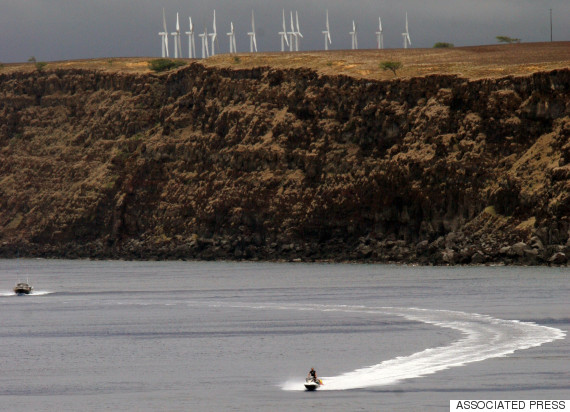Hawaii Set for 100% Renewable Energy
With a bill passed by Hawaii Legislature this week, the state is set to become the very first in the United States to be run completely off renewable energy, due to be completed by 2045. While the clean air and environmental impacts of going 100% renewable are drastic and rewarding, the main reason for the switch is stop the expensive importation of fuel. Approximately 93% of Hawaii's energy is imported, (Magill, Scientific American,) which makes residential power rates extremely high, the most expensive in the nation in fact at 175% of the country's average.
“This is a significant step in our effort toward reducing Hawaii’s dependence on expensive imported oil and putting the state on the path toward greater energy, environmental and economic security,” Mark Glick, Hawaii State Energy Office administrator

Pakini Wind Farm, South Point Bay - Island of Hawaii (photo via Huffpost.com)
Hawaii is unique in its abundance of natural resources. In addition to the solar and hydro powers readily available, strong trade winds and even volcanic heat can be harnessed as energy sources. While going 100% renewable is a huge task, the state has made its clean energy goals in the past. A goal of 15% renewable energy was put in place to be reached by 2015; five months in, Hawaii is already at 23% renewable energy.
Hawaii is not the lone state with the goals of 100% renewable, however.
"The city of San Francisco aims to have its electricity grid go fully renewable by 2020, and San Diego’s goal is 2035. Globally, Iceland is already using 100 percent renewable energy, and Scotland and Denmark also have similar goals in place." (Cave, HuffingtonPost.com.)
Read more on Hawaii's Clean Energy Initiative.
Sources: James Cave, HuffingtonPost.com, Bobby Magill, ScientificAmerican.com





